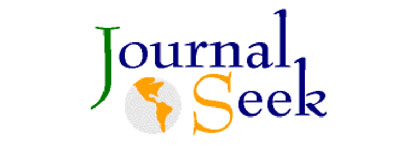Endophyte Initiation Beauveria bassiana (Balsamo) Vullemin (Hypocreales: Cordycipitaceae) in Reduction of Aphis glycine Matsumura (Hemiptera: Aphididae) Investation in Soybean (Glycine max (L.) Merrill) Plant
DOI:
https://doi.org/10.21776/ub.jpal.2019.010.01.04Abstract
Soybean (Glycine max (L.) Merrill) is a universal important plant. Its production has decreased each year. A major problems is a pest known as Aphis glycine Matsumura (Hemiptera: Aphididae) which caused the decline of yield up to 40%. Thus, there is a need to control A. glycine. Recent studies showed B. bassiana has a potency as endophyte in Vicia faba (Fabaceae) plant tissue. It could harm A. gossypii and causes death up to 57,7%. Therefore, the aim of this research is to control infestation of A. glycine by using B. bassiana. This research used Randomized Block Design with soybean plant Anjasmoro variety as samples. The initiation of B. bassiana was conducted by using seed-soaking and soil-wetting methods. The results showed that fungus B. bassiana was able to colonize soybean plants with a percentage of colonization reaching 6.67%. Colonization was only found in the stems of soybean plants in the seed immersion treatment with the susceptibility of B. bassiana fungus in density of 108 conidia / mL for 2 hours, colonization on the stem itself by 20%. Fungus density results from evaluation of 1.6 x 105 conidia / mL and conidial viability reached 87.4%. There were no deaths and changes in the population of A. glycine aphids. Direct pathogenicity testing has a significant effect on the treatment between observations of the second day. Initiation of B. bassiana fungi did not significantly affect plant height and number of leaf branches. This results conclude that B. bassiana may function as endophyte in soybean plants. However, its function in reduction of greenfly still need further research
Keywords: Biological control, Environmental pest management, Greenfly
References
Indonesian National Statistic, 2016
Tilmon, K. J., E. W. Hodgson, M. E. O’Neal, dan D. W. Ragsdale., 2011. Biology of the Soybean Aphid, Aphis glycines (Hemiptera : Aphididae) in the United States. Journal of Integrated Pest Management 2 (2): 1 – 7.
Akutse, K.S., N.K. Maniania, K.K.M. Fiaboe, J. Van Den Berg, S. Ekesi. 2013. Endophytic Colonization of Vicia faba and Phaseolus vulgaris (Fabaceae) by Fungal Pathogens and Their Effects on The Lifehistory Parameters of Liriomyza huidobrensis (Diptera: Agromyzidae). Fungal Ecology 6 (4): 293 – 301.
Saikkonen K., Lehtonen P., Helander M., Koricheva J., Faeth S. H. (2006). Model systems in ecology: dissecting the endophyte–grass literature. Trends Plant Sci. 11 428–433.
Gurulingappa, P., P. A. McGee, G. A. Sword. 2011. Endophytic Lecanicillium lecanii and Beauveria bassiana Reduce the Survival and Fecundity of Aphis gossypii Following Contact with Conidia and Metabolites. Crop Protection 30 (3): 349 – 353.
Parsa, S., V. Ortiz, dan F.E. Vega. 2013. Establishing Fungal Entomopathogens as Endophytes: Towards Endophytic Biological Control. Journal of Visualized Experiments 74: 1 – 5.
Mantzoukas, S., C. Chondrogiannis, dan G. Grammatikopoulos. 2015. Effects of Three Endophytoc Entomopathogens on Sweet Sorgum and on The Larvae of The Stalk Borer Sesamia nonagrioides. Entomologia Experimentalis et Applicata 154 (1): 78 – 87.
Qayyum, M. A., W. Wakil, M. J. Arif, S. T. Sahi, C. A. Dunlap. 2015. Infection of Helicoverpa armigera by Endophytic Beauveria bassiana Colonizing Tomato Plants. Biological Control 90: 200 – 207.
Behie, S.W., P.M. Zelisko, dan M.J. Bidochka. 2012. Endophytic Insect – Parasitic Fungi Translocate Nitrogen Directly from Insect to Plants. Science 336 (6088): 1576 – 1577
Behie, S.W., C.C. Moreira, I. Sementchoukova, L. Barelli, P.M. Zelisko, dan M.J. Bidochka. 2017. Carbon Translocation from a Plant to an Insect – Pathogenic Endophytic Fungus. Nature Communications 8 (14245): 1 – 5.
Waqas, M, Khan AL., Hamayun M, Shahzad R, Kang SM, Kim JG and Lee IJ. 2015. Endophytic fungi promote plant growth and mitigate the adverse effects of stem rot: an example of Penicillium citrinum and Aspergillus terreus
Behie, S.W., S.J. Jones, dan M.J. Bidochka. 2015. Plant Tissue Localization of The Endophytic Insect Pathogenic Fungi Metarhizium and Beauveria. Fungal Ecology 13: 112 – 119
Downloads
Published
Issue
Section
License
Authors who publish with this journal agree to the following terms:
- Authors retain copyright and grant the journal right of first publication with the work simultaneously licensed under a Creative Commons Attribution License that allows others to share the work with an acknowledgement of the work's authorship and initial publication in this journal.
- Authors are able to enter into separate, additional contractual arrangements for the non-exclusive distribution of the journal's published version of the work (e.g., post it to an institutional repository or publish it in a book), with an acknowledgement of its initial publication in this journal.
- Authors are permitted and encouraged to post their work online (e.g., in institutional repositories or on their website) prior to and during the submission process, as it can lead to productive exchanges, as well as earlier and greater citation of published work (See The Effect of Open Access).














